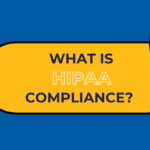
Risk and Compliance: A Deep Dive into SOC 2, ISO 27001, Information Security, Data Privacy, and Business Continuity
In today’s digital landscape, organizations face mounting pressures to safeguard their data, adhere to rigorous compliance standards, and ensure business continuity. As cyber threats evolve and regulatory requirements become more stringent, understanding and implementing robust risk and compliance strategies is paramount. This blog explores key aspects of risk and compliance with a focus on SOC 2, ISO 27001, information security, data privacy, and business continuity.
Understanding SOC 2: Ensuring Trust Through Control
SOC 2, or System and Organization Controls 2, is a framework established by the American Institute of CPAs (AICPA) designed to ensure that service providers manage and protect data in a way that aligns with the five Trust Service Criteria: Security, Availability, Processing Integrity, Confidentiality, and Privacy. A SOC 2 Type 2 report is widely accepted as a reliable assurance for risk management in the organization.
Why SOC 2 Matters:
- Customer Trust: SOC 2 compliance demonstrates a company’s commitment to safeguarding client data, fostering trust and confidence.
- Competitive Advantage: Being SOC 2 compliant can differentiate a company in a crowded market, showing potential clients that their data will be handled with utmost care.
- Risk Mitigation: Regular SOC 2 audits help identify and address potential vulnerabilities in a company’s systems and processes.
Key Steps to Achieve SOC 2 Compliance:
- Define Scope: Determine the systems and processes to be covered by the SOC 2 audit.
- Implement Controls: Develop and implement policies and procedures that align with the Trust Service Criteria.
- Continuous Monitoring: Regularly monitor and review controls to ensure ongoing compliance and address any issues promptly.
- Audit and Report: Engage an independent auditor to review your controls and produce a SOC 2 report.
Refer to Gradient M’s Risk and Compliance service offerings for more details on SOC 2 Compliance consulting services leading to a SOC 2 Audit by 3rd party CPA firm.
ISO 27001: Building a Comprehensive Information Security Management System
ISO 27001 is an international standard for information security management systems (ISMS). It provides a systematic approach to managing sensitive company information, ensuring its confidentiality, integrity, and availability.
Why ISO 27001 Matters:
- Global Recognition: ISO 27001 is a globally recognized standard that can enhance your organization’s reputation and credibility.
- Risk Management: It helps identify potential risks and implement measures to manage them effectively.
- Legal and Regulatory Compliance: Adopting ISO 27001 can aid in complying with various legal and regulatory requirements related to information security.
Key Steps to Achieve ISO 27001 Certification:
- Establish ISMS: Develop a comprehensive ISMS framework that includes policies and procedures, risk assessments, and controls implementation.
- Risk Assessment: Conduct a thorough risk assessment to identify and evaluate potential threats and vulnerabilities.
- Implement Controls: Deploy appropriate controls to mitigate identified risks.
- Internal Audit: Regularly conduct internal audits to ensure the ISMS is functioning as intended. Implement remediation plans for gaps identified.
- Certification Audit: Engage an accredited certification body to perform an external audit and verify compliance with ISO 27001.
Refer to Gradient M’s Risk and Compliance service offerings for more details on ISO 27001 ISMS Compliance consulting services leading to a ISO 27001 Audit and Certification from a Certification body.
Information Security: The Bedrock of Risk Management
Information security is the practice of protecting data from unauthorized access, disclosure, alteration, and destruction. It encompasses a broad range of strategies and technologies aimed at securing data integrity, confidentiality, and availability.
Key Aspects of Information Security:
- Policies and Procedures: Robust policies and procedures following international standards like NIST, ISO 27001, SOC 2 Trust Services Criteria etc.
- Data Encryption: Use encryption to protect data both at rest and in transit.
- Access Controls: Implement strong access controls to ensure that only authorized personnel have access to sensitive information.
- Security Awareness Training: Regularly train employees on security best practices and emerging threats.
- Incident Response: Develop and maintain an incident response plan to address and mitigate the impact of security breaches.
- Audits and Assurance: Periodic audits (internal / external) to ensure compliance to regulations, client contracts and company policies.
Data Privacy: Navigating the Regulatory Landscape
Data privacy focuses on the proper handling and protection of personal data. With regulations such as the General Data Protection Regulation (GDPR) in Europe and the California Consumer Privacy Act (CCPA) in the U.S., ensuring data privacy is not just a regulatory requirement but also a key aspect of maintaining customer trust.
Key Considerations for Data Privacy:
- Data Minimization: Collect and retain only the data necessary for business purposes.
- User Consent Management: Obtain explicit consent from users before collecting or processing their data.
- Data Subject Rights: Implement processes to address data subject requests, such as access, correction, and deletion of their personal information.
- Compliance Monitoring: Regularly review and update privacy policies and practices to comply with evolving regulations.
- Privacy Audits: Conducting regular audits to ensure compliance with data privacy regulations and company policies.
Business Continuity Management: Ensuring Operational Resilience
Business continuity involves planning and preparing to ensure that critical business functions can continue during and after a disruptive event. This includes natural disasters, cyber-attacks, and other emergencies.
Key Components of a Business Continuity Plan:
- Risk Assessment: Identify potential threats and their impact on business operations. This should include any related technology platforms, applications, IT infrastructure and connectivity etc.
- Business Impact Analysis: Determine the critical functions and processes that are essential for business operations. Identify technology and systems dependencies.
- Recovery Strategies: Develop strategies and procedures to recover and restore critical functions in the event of a disruption.
- Disaster Recovery Plan (DRP): Developing a plan to recover IT systems, communication networks / connectivity and data after a disaster.
- Testing and Drills: Regularly test and update the business continuity plan to ensure its effectiveness and relevance.
- Training and Awareness: Providing regular training and creating awareness among staff to ensure they understand their roles and responsibilities during crisis situations and accordingly prepare during business as usual.
Refer to Gradient M’s Risk and Compliance service offerings for more details on Information Security, Data Privacy and Business Continuity Management consulting services.
Conclusion
Navigating the complexities of risk and compliance requires a multifaceted approach that integrates SOC 2, ISO 27001, information security, data privacy, and business continuity. By implementing these frameworks and best practices, organizations can not only protect their data and comply with regulations but also build a resilient and trustworthy business that can thrive in an increasingly challenging environment. Prioritizing these areas will not only safeguard your operations but also enhance your reputation and provide a solid foundation for future growth.


